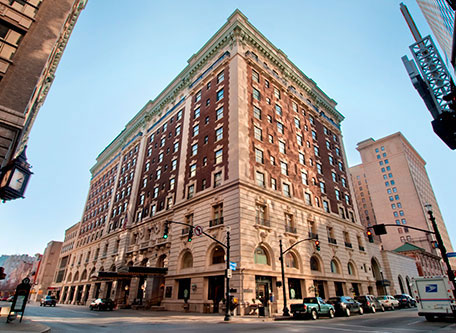Receive for Free - Discover & Explore eNewsletter monthly with advance notice of special offers, packages, and insider savings from 10% - 30% off Best Available Rates at selected hotels.
the oakroom
The Oakroom
Discover the history of the Oakroom. WATCH NOWThe Oakroom’s transformation from a gentlemen’s billiard hall to a refined dining space is a fascinating tale of evolution, both architectural and cultural. Originally conceived in 1907 as an exclusive retreat for men, the room’s design embodied the era’s social norms, with its hand-carved American Oak paneling, private bar, and card room providing a secluded space for relaxation and leisure. The exclusion of women from such spaces reflects a time when societal roles were rigidly defined, and the very presence of billiard tables in this setting symbolized a form of masculinity associated with wealth, status, and leisure.
Even though the room has since been restored to its present elegance, elements of its past remain visible. The oak-paneled walls and columns still retain their stately presence, while the subtle traces of the old billiard room—such as remnants of the cue racks on the south wall—invite guests to imagine a bygone era of gentlemanly games and private indulgence.
The Oakroom’s hidden features, like the secret exit once used by notorious figures such as Al Capone, add an air of mystery and intrigue to the space. The “Al Capone room,” as it is now known, harkens back to the Prohibition days when organized crime and covert activities were part of the cultural fabric. The boarded-up panel on the southwest wall, which once allowed swift escapes for gangsters, adds an almost cinematic quality to the room’s history, reminding guests that the Oakroom wasn’t just a place of leisure, but also one of shadowy dealings and escape.



































